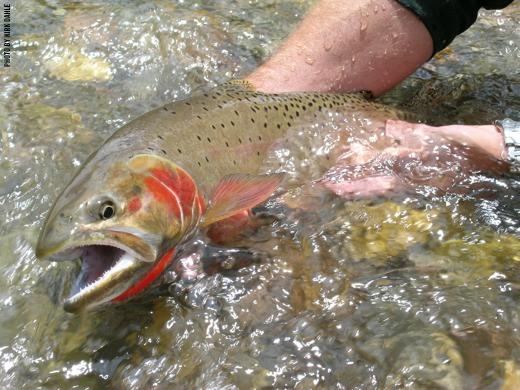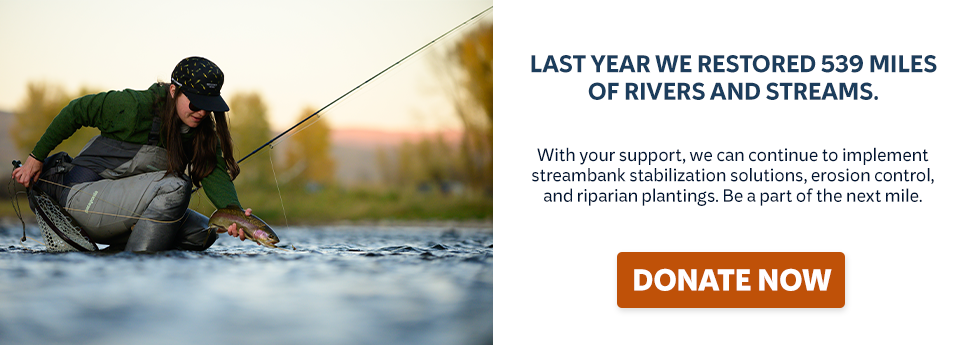
A Chalk Creek native Bonneville cutthroat: Reconnected to spawning habitat
FOR IMMEDIATE RELEASE
Nov. 6, 2013
Contact:
Paul Burnett, 801-436-4062
Tim Hawkes, 801-928-9008
Trout Unlimited, rancher boost fish habitat on Chalk Creek
Project reconnects Weber River cutthroats with spawning habitat
(Salt Lake City)The Weber River is home to one of Utahs most popular and diverse fisheries, where anglers can pursue massive brown trout and native species like mountain whitefish and Bonneville cutthroat trout. The Webers Bonnevilles represent a unique and increasingly rare migratory life history that uses the mainstem of the river and tributaries much like a salmon uses the ocean and its freshwater rivershatching in tiny tributary streams, moving down into the mainstem where there can find a lot more food to bulk up and reach larger sizes, and then migrating back into the tributaries to spawn. In many Weber River tributaries, however, irrigation diversions, culverts and other obstructions prevent this from happening.
Such has been the situation on the South Fork of Chalk Creek for many years. Chalk Creek is home to one of the Webers last and best populations of native cutthroat. For years, however, an irrigation diversion on the South Fork not only created an impassable barrier for fish moving upstream but often dried up the lower mile of the creek, disconnecting it from the mainstem Chalk Creek and the Weber.
This was an unprecedented opportunity to reconnect 26 miles of tributary habitat with a core cutthroat trout population in Chalk Creek, said Paul Burnett, Weber River Project Manager for Trout Unlimited. And we wanted to do it holistically in a way that also benefits the landowner and his water needs.
Over the past three years, Trout Unlimited worked with local resident and multi-generation rancher Jerrold Richins to upgrade his irrigation system. The project partners removed the channel-spanning diversion and installed a screened, streamside pump downstream on the mainstem of Chalk Creek. This solution provides Mr. Richins with a more reliable diversion with reduced maintenance. It also funded a new, more efficient pivot irrigation systema win for the rancher and his operations.
Fish saw immediate benefits as well. As a result of the project, the South Fork now remains wetted throughout the year and reconnected to the mainstem, allowing native fish to move upstream (or downstream) to spawn or in response to temperature or other environmental conditions. The project opens up critical tributary habitat in the South Fork, allowing this veritable fish factory to thrive, a process that ultimately feeds fish back to the mainstem of the Weber River, creating more fishing opportunities for local anglers.
The experience we have fishing on the river is influenced by the habitat we see directly and by the actions taken by landowners in other areas of the watershed. It is all connected, so efforts to reconnect tributary habitat also restores the health of our river and improves fishing no doubt about it, said TU biologist Burnett.
For his part, Mr. Richins is pleased with the changes on Chalk Creek.
Im proud of this project and enjoyed working with Trout Unlimited. The project helps me and our familys ranch, and also puts water back in the stream for fish. Im happy to see it all work out for everybody.
These kind of win-win projects are the hallmark of TUs approach to conservation, said Tim Hawkes, director of TUs Utah Water Project. Were interested in finding pragmatic solutions that work for agriculture as well as fish and wildlife.
–30–
Trout Unlimited is the nations largest coldwater conservation organization, with 140,000 members dedicated to conserving, protecting, and restoring North Americas trout and salmon fisheries and their watersheds.


